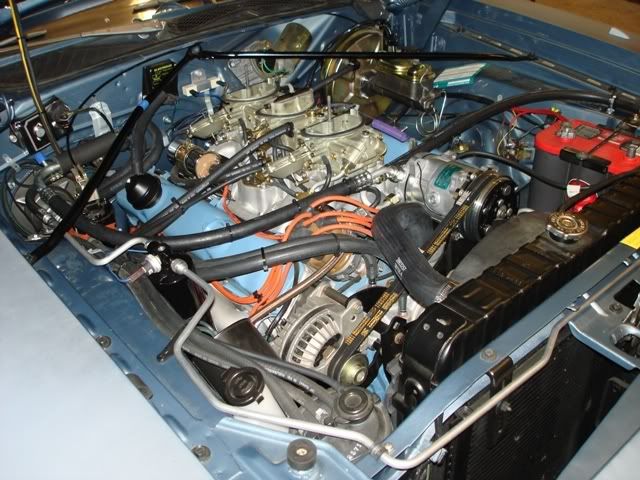More info?
These cars/engines were built originally to be daily drivers and were set-up to have decent cold running drivability from cold start up and on thru complete warm-up. Putting a thermostatically controlled heat riser valve in the passenger exhaust manifold to divert exhaust heat under the intake manifold improved cold running drivability and allowed for a divorced type choke system. As we all know, a colder denser air fuel mixture for a warm motor improves performance in most cases. Blocking the heat to the intake may help performance but it completely changes the way the original choke functions. The correct choke function is dependent on the tension created by a bi-metal coil spring. The choke spring is mounted in the choke well directly above the heat crossover passage in the intake manifold. As it heats the coil expands and releases tension on the carbís choke system at a set rate determined by the heat present in the coke well. Without this heat the spring, set for proper cold running, will continue to choke the carb well into the warn-up cycle and may not release all its tension at all. After market street carbs will have a completely electrical choke system not dependant on crossover heat. Not an option for the original six-pack center carb.
Mid 70ís and up motors usually came with a divorced choke with built in electrical heating elements to have the choke come off even quicker than would be normal with only crossover heat, mainly for exhaust emissions requirements. This heating element ran quite hot and pulled more current than would normally be acceptable powered up thru a complete run cycle. A temperature sensitive timer (choke heater control) was used to shut off current flow to it after about 10 mins or so. As mentioned in the first post, these original choke heater controls were troublesome from the beginning. Tended to burn the contacts internally and stop current flow to the heater.
So I took a heated choke spring assembly from a mid 70ís big block, trimmed the spring mount, that includes the heating element, and riveted in place of the mount on the Holley six-pack choke assembly. After going through 2 NOS choke controls ended up building a relay based IC controlled timer to shut off full voltage to element after about 6 mins. at which time current continues, at a much reduced rate, through a high power resister to keep the spring from cooling down. Found that at my 180` normal operating temp, after mainly cruising conditions, the choke spring wouldnít stay completely relaxed without some additional heat.
End result, although this car is not a daily driver, with the Edelbrock heads and headers, it starts up perfectly when cold and is off fast idle in about 4-5 mins.
Doug


